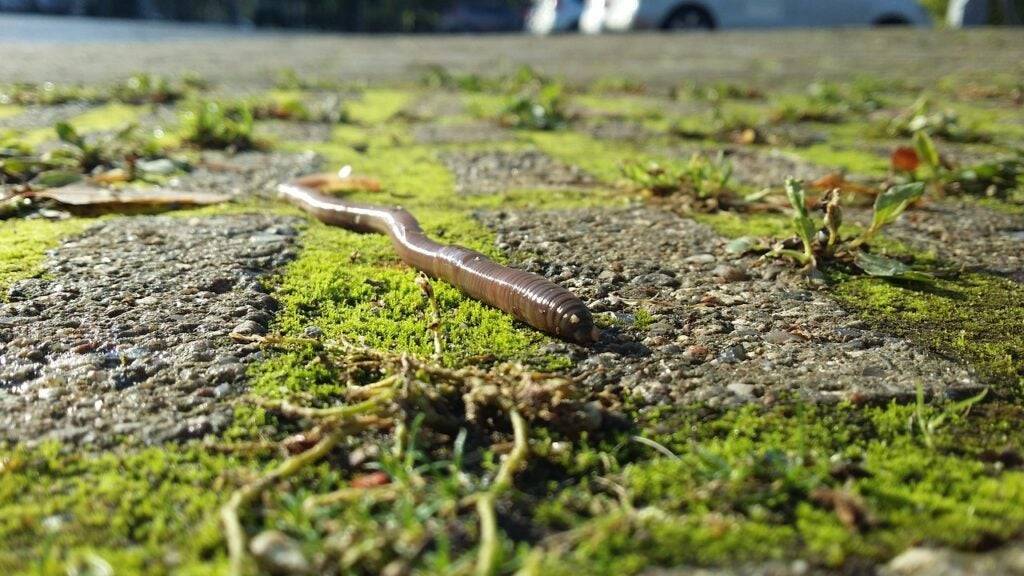
In 2018, 27 million tonnes of plastic were dumped into landfills in the United States. The majority of this waste was in the form of containers and packaging, such as bags, sacks, or bottles. Even when environmentally conscious consumers try to avoid plastic packaging while shopping for necessities, it can be difficult.
Bioplastics have been promoted as a possible solution to the problem of disposable packaging because they offer a transition away from petroleum-based plastics, faster decomposition, and potential fertilizing material. But are there any drawbacks to releasing them into the environment?
Earthworms have been shown in a study published recently in the journal Environmental Science & Technology to have a strong ability to consume bioplastic derived from polylactic acid (PLA), which is typically made from plant-based sugars.
Findings of Study:
Lei Wang, a Nankai University professor, compared how earthworms interacted with various types of plastic, as well as the annelids' ability to break down the substances. However, he discovered that the process does not end with decomposition.
Plastics that sit in landfills in the wind, sun, and water break down into smaller particles known as microplastics, as opposed to composting, which turns waste into nutrient-rich dirt. These fragments are then easily transported into the oceans, food, and soil.
Microplastics are frequently ingested by animals via a variety of vectors, but few receive as much exposure as soil-loving earthworms. They eat the dirt as they tunnel to digest the organic matter. If the soil contains plastic, it may become a part of the worms' diet. While this has been documented in many cases, there has been less research on the effects of bioplastics.
This could be due in part to the fact that the category is still ambiguous. "A bioplastic is a polymer made entirely of bio-derived constituents that can be processed in the same way as regular plastic," says Damien Guironnet of the University of Illinois-Urbana Champaign, who was not involved in the new study.
However, Ting Xu, a chemist at the University of California, Berkeley, who did not contribute to the paper, notes that the term bioplastics can also refer to biodegradable forms of plastic. According to her, the definition is still not fully standardized. Because of this discrepancy, Wang refers to "bio-based plastics" in his research.
"Some researchers define bioplastics as a "broad category of materials encompassing bio-based, biodegradable, or both bio-based and biodegradable plastics," according to Wang. "Bio-based plastics,' in my opinion, is a more accurate statement." In some ways, all plastics are biodegradable, albeit to varying degrees."
At the same time, a polymer derived from natural materials may not decompose on its own, potentially exposing earthworms to bioplastic particles in their diet. Wang claims that existing research does not support a significant difference in environmental pollution between bioplastics and petroleum-based plastics, despite the fact that degradable and non-degradable plastics pose different levels of risk.
"At the moment, most biodegradable plastics in the natural environment do not degrade as quickly as people believe, because such design reduces their durability," Wang explains. "However, they have a greater affinity for microorganisms than non-biodegradable plastics." This could imply differences in the ecological and health risks posed by microorganisms."
Wang and his colleagues planted four materials in a test chamber to see which plastics earthworms prefer to digest: a full fossil fuel-based plastic, a fully degradable and bio-based plastic, and two semi-synthetic plastics. Earthworms appeared to avoid the two cellulose-based semi-synthetic plastics, but they approached soil containing both the bio-based PLA plastic and the fossil fuel-based PET plastic. Invertebrates were able to break down PLA much more easily than PET. This did not surprise Xu, who explains that the arrangement of the polymers determines their ability to decompose.
"PLA is always easier to break down than PET," Xu says. "There are several reasons for this. One is that, despite the fact that both are ester bonds, natural enzymes can degrade PLA because they require lactic acid as a food."
In fact, PLA may degrade too quickly, making it hazardous in natural environments. Wang and his colleagues discovered that most of the PLA had been degraded into nanoparticles, which are up to 1,000 times smaller than a micron, by the end of their 10-day ingestion tests. Wang expresses concern about a potential ecological risk, which Xu shares.
"They can be left behind as particles, and they last a long time," she explains. "It makes no difference if they are biodegradable. They will continue to act as a microparticle.”
In recent years, microplastics have been linked to potential health risks, owing in part to additives such as hormone-disrupting BPA, carcinogenic phthalate, and toxic heavy metals. However, bio-based microplastics and nanoplastics are understudied, as Wang points out in his study. Guironnet agrees that the environmental effects of bioplastics are complex, ranging from large carbon footprints to material sourcing.
Wang hopes that his findings will stimulate further research into the breakdown of bioplastics in soil. While it is clear that earthworms can digest PLA plastics, it is unknown whether they gain any nutritional value from them. The life cycle of bioplastics is a new question, and it's critical to understand how the planet's ecosystems are adapting to them, according to Wu.
(Source: Popular Science)
















